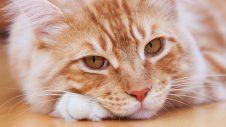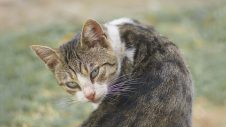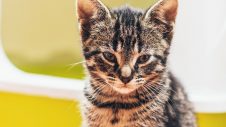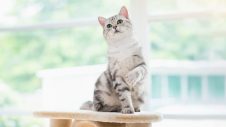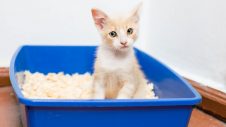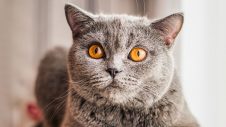Toilet Troubles
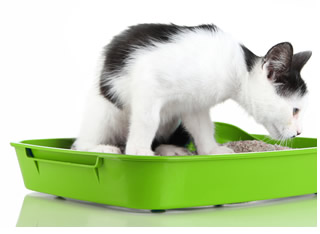
Toilet Troubles in Cats is Reason for Concern
Cats are usually more than happy to use their litter box inside or dig in the dirt after a meal or a drink.
However, many cats fall victim to feline urinary health or lower urinary tract diseases (FLUTDs) which sees them finding it very difficult to urinate at all.
While this issue may sound merely uncomfortable for your cat, difficulty urinating requires immediate veterinary attention.
A blockage in the flow of urine is life threatening and ‘blocked’ cats can experience kidney damage or even die if not treated within 24 to 48 hours.
There is no single cause of urinary problems but common symptoms include straining or vocalising when urinating, signs of blood in the urine or urinating in unusual places like the kitchen or bathroom.
Male cats, either neutered or unneutered, are particularly susceptible to urinary tract disorders as are overweight cats and certain breeds such as Persians.
To help prevent FLUTDs, you can talk to your local Greencross Vet about feeding your cat a quality food low in magnesium, phosphate and calcium to decrease the chances of crystal and stone formation in their urine.
Also make sure your cat’s litter box is always kept clean and is placed in a quiet, secure environment and that your cat gets plenty of exercise.
What is FLUTD?
In the majority of cats with signs of lower urinary tract disease (FLUTD), the cause is unknown and these cats are characterised as having idiopathic lower urinary tract disease or feline idiopathic cystitis (FIC). Stones or uroliths are the next most common condition, with struvite uroliths increasing in proportion to calcium oxalate uroliths in recent years. These conditions are the three most commonly diagnosed lower urinary tract problems in cats.
Risk factors associated with FLUTD
A multimodal approach is recommended for the management of feline urinary tract disease. The approach includes identifying and controlling underlying medical disorders, modifications to the cat’s home environment, addressing behaviour issues, and dietary management. Giving an appropriately formulated food is a key element of the complete approach to the long-term management of the most common conditions of FLUTD in cats.
Food
High levels of certain minerals in food can increase the chance of crystal formation. Food also influences the acidity/alkalinity of urine, which can lead to crystal formation. High urine pH can contribute to the production of struvite stones, while low urine pH can produce calcium oxalate stones.
Behaviour
Lack of exercise, confinement indoors, reduced water intake and even dirty litter trays may cause your cat to urinate less often, which can lead to the development of FLUTD.
Body Condition
Excess weight also predisposes a cat to FLUTD.
Gender
Urinary obstruction is more common in younger, male neutered cats but that’s not to say that adult cats and female cats can’t suffer from lower urinary tract disease, because they can!
Signs of FLUTD
FLUTD can be uncomfortable, and, if a blockage occurs, extremely dangerous. Recognising the typical signs is critical, these include:
- Abnormal urination, including blood in the urine, abnormal colour of urine, excessive straining to urinate, or passing urine frequently in small amounts.
- Abdominal pain.
- Behavioural changes, such as restlessness, listlessness, hiding or refusal to eat.
- Changes in the pattern of urination, such as urinating outside the litter pan or in unusual places.
Male cats, either neutered or unneutered, are particularly susceptible to lower urinary tract disease as are overweight cats.
If you suspect that your feline friend is having trouble toileting please contact your local Greencross Vets immediately.


 Greencross Vets
Greencross Vets 